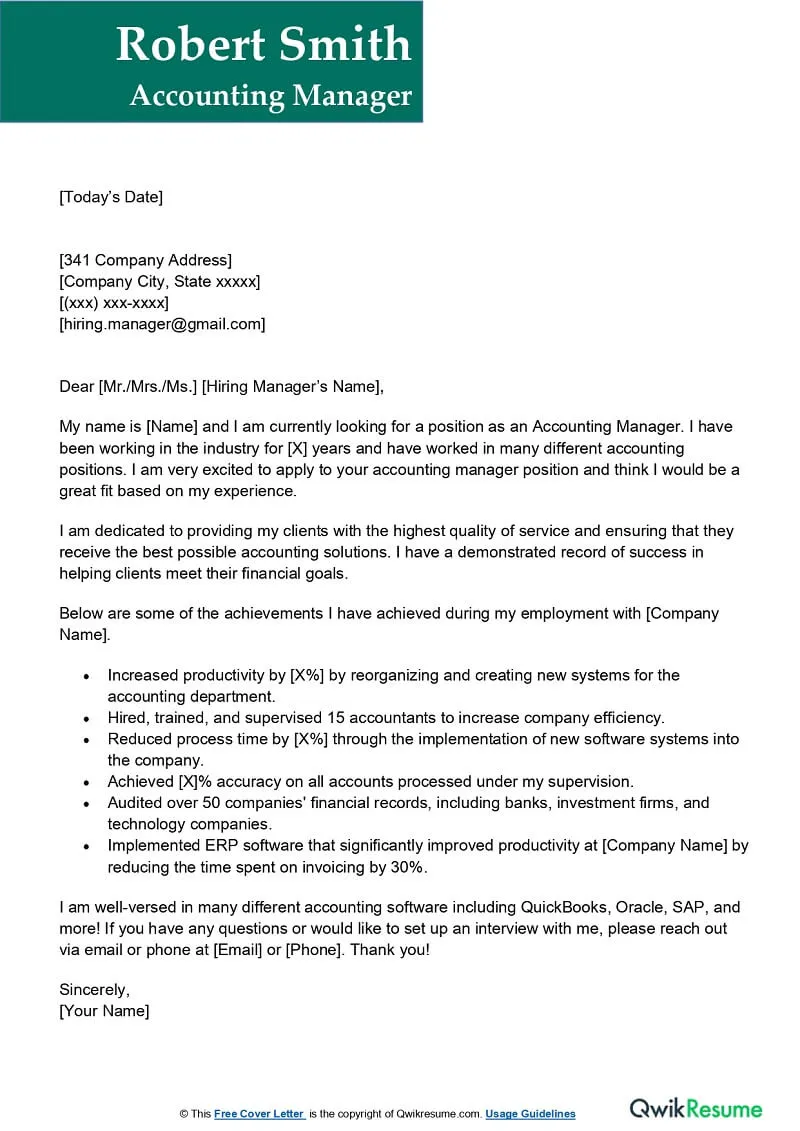Key Elements of a Strong Accounting Manager Cover Letter
Crafting a compelling accounting manager cover letter is critical for making a positive first impression and securing an interview. It’s your chance to showcase your skills, experience, and enthusiasm for the role. Unlike a resume, which provides a factual overview, a cover letter allows you to tell your story, demonstrating how your qualifications align with the specific needs of the company. By strategically highlighting your achievements and tailoring the letter to each job application, you significantly increase your chances of standing out from the competition. Remember, a well-written cover letter is not just a formality; it’s a powerful tool for landing your dream job. The goal is to be concise, targeted, and captivating, giving the hiring manager a reason to invite you in for an interview. This guide will take you through the secrets to making your cover letter a success.
Contact Information and Salutation
Begin your cover letter with your contact information, including your full name, phone number, email address, and LinkedIn profile URL (optional). Make sure this information is accurate and up-to-date. Following your contact details, address the hiring manager appropriately. Avoid generic greetings like “To Whom It May Concern.” Research the hiring manager’s name and title. If you cannot find the name, try “Dear Hiring Manager” or “Dear [Department Name] Hiring Team.” Personalizing the salutation shows you’ve put in the effort and demonstrates attention to detail, essential qualities for an accounting manager. This step is crucial for establishing a professional tone from the outset and showing respect for the recipient of your cover letter.
How to Address the Hiring Manager Effectively
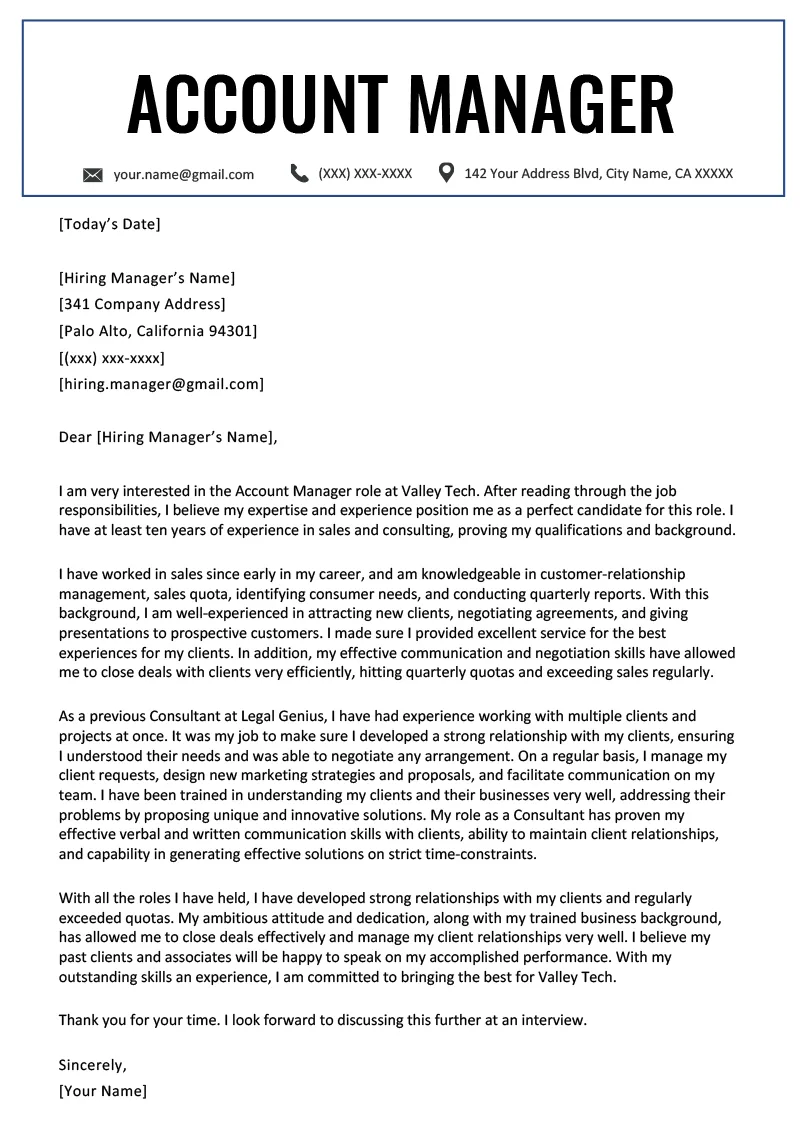
Personalizing your greeting is a subtle yet significant way to make a positive impact. Using the hiring manager’s name, if available, instantly makes your application feel more personal and engaging. If you’re unsure of the name, a little research can go a long way. Check the company’s website, LinkedIn profiles, or even reach out to the company’s HR department to inquire. If identifying the hiring manager proves impossible, ‘Dear Hiring Team’ or ‘Dear [Department Name]’ are acceptable alternatives. Whatever greeting you choose, make sure it aligns with the company’s culture and the formality of the role. Always ensure that you spell the recipient’s name correctly to avoid any negative first impressions. Addressing the hiring manager correctly is a small detail that can significantly improve your chances of getting noticed.
Opening Paragraph’s Impact
The opening paragraph is your opportunity to capture the hiring manager’s attention and create a strong first impression. Start with a concise, enthusiastic statement that clearly states the position you are applying for and where you saw the job posting. Then, briefly highlight your most relevant qualifications or a key achievement that aligns with the job requirements. The goal is to immediately demonstrate your understanding of the role and express your genuine interest in the company. This opening should serve as a hook, encouraging the reader to continue through the rest of your letter. Avoid generic phrases or clichés; instead, aim for a statement that is specific, impactful, and tailored to the specific job.
Grabbing Attention from the Start
To capture attention, avoid generic introductions. Instead of saying “I am writing to express my interest,” try a more dynamic approach. For instance, you might start by mentioning a specific skill that directly addresses a requirement in the job description or highlighting a significant achievement related to accounting. For example, you could begin with a statement like, “With five years of experience in financial reporting and a proven track record of reducing costs by 15%, I am excited to apply for the Accounting Manager position at [Company Name].” This approach immediately shows your qualifications and conveys your enthusiasm for the role. Ensure your opening paragraph reflects the specific needs and goals of the company you are applying to. It also demonstrates that you have taken the time to understand the position.
Highlighting Relevant Experience
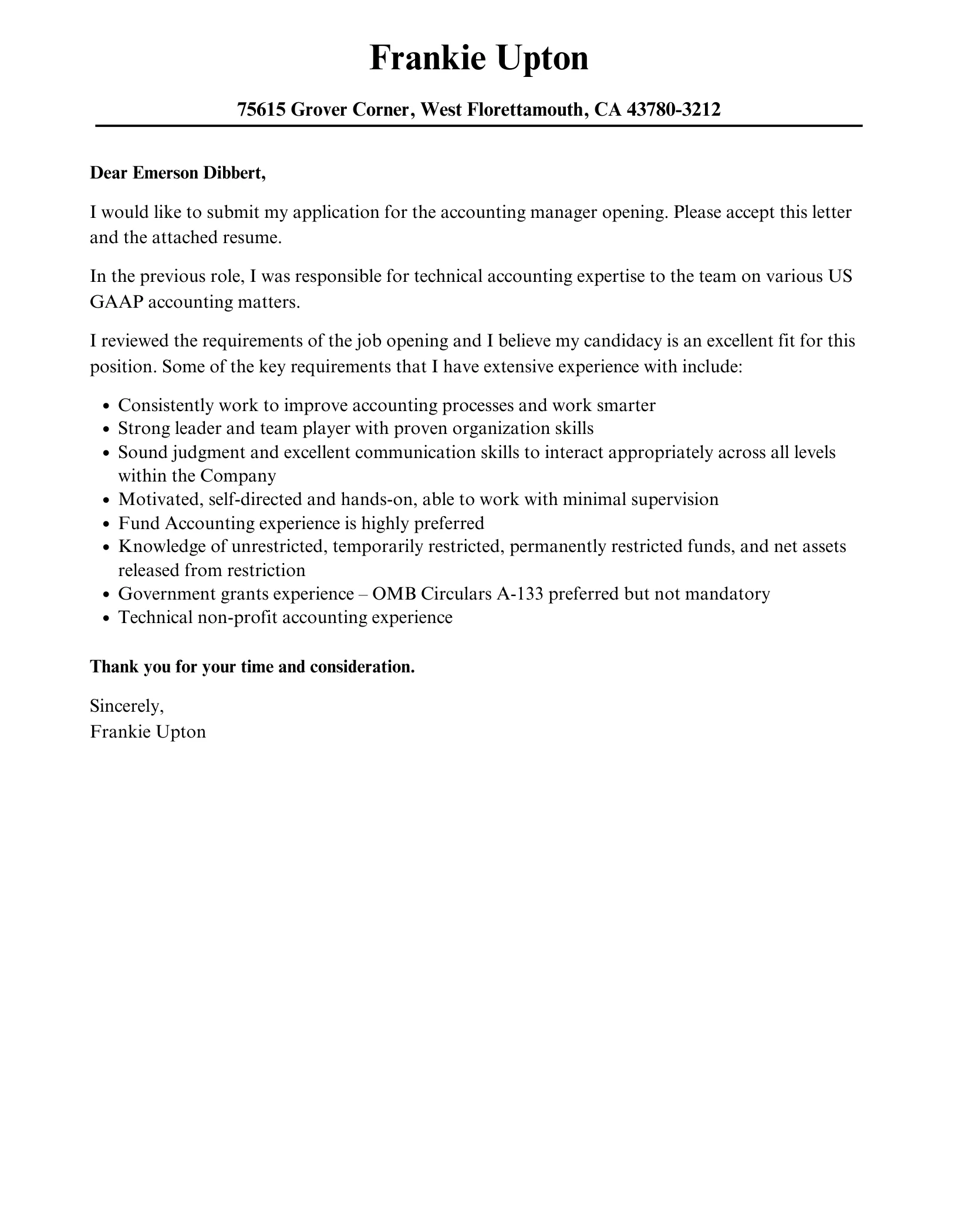
The body of your cover letter should detail your experience and skills. Focus on the experiences that directly relate to the job requirements. Use specific examples to demonstrate how you’ve successfully performed similar tasks or solved similar problems in the past. For each experience, outline the situation, the actions you took, and the positive results you achieved (the STAR method). Quantify your achievements whenever possible. Use numbers to showcase your impact. This demonstrates the value you can bring to the company. Tailor the content to mirror the job description, ensuring you’re addressing the key responsibilities and required skills that the employer listed. Avoid simply repeating your resume; instead, expand on the information to showcase your personality and capabilities. Make it easy for the hiring manager to see the link between your expertise and their needs.
Quantifying Achievements and Results
Quantifying your achievements is crucial for demonstrating your impact and value. Instead of saying “Improved efficiency,” state “Improved efficiency by 20%.” Instead of writing “Managed a team,” write “Managed a team of 10 accountants, ensuring timely and accurate financial reporting.” Use numbers to show the scale of your accomplishments, such as the amount of money saved, the percentage increase in efficiency, or the number of projects completed. This approach provides concrete evidence of your capabilities. It allows the hiring manager to quickly assess the value you can bring to their organization. Use metrics that are relevant to the role you’re applying for and the specific goals of the company. Quantifying your achievements is one of the most effective ways to differentiate your cover letter and get noticed by the hiring manager.
Showcasing Specific Skills
In your cover letter, make sure to highlight the specific skills that are most relevant to the job description. Look closely at the job posting and identify the skills the employer is seeking. These might include technical skills, such as proficiency in accounting software like QuickBooks or SAP, or soft skills, such as communication, problem-solving, and leadership. Provide specific examples of how you have utilized these skills in the past. For example, if the job requires experience with financial analysis, describe a project where you performed this type of analysis. This should have led to improved financial performance. The examples should illustrate your ability to apply these skills in real-world situations. By aligning your skills with the requirements outlined in the job posting, you demonstrate that you are a good fit for the role and a valuable asset to the company.
Tailoring to the Job Description
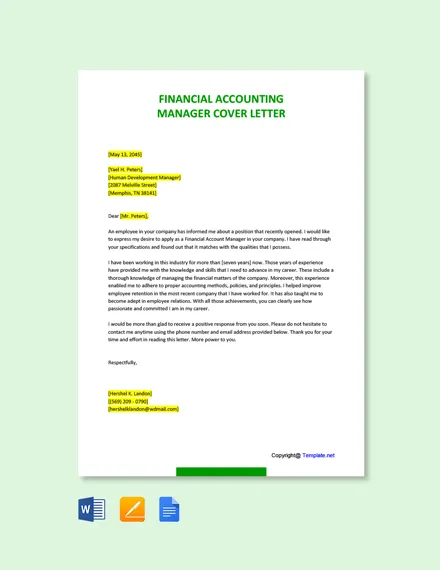
Customizing your cover letter for each job application is essential. Generic cover letters are easily recognizable and often result in rejection. Each job posting contains specific requirements, responsibilities, and desired skills. Review the job description carefully. Identify the key requirements, and then tailor your cover letter to address them. This shows you have read the job posting and understand the role. It also shows your genuine interest in the position. Use the same keywords and phrases from the job description to demonstrate that you understand the role. Avoid simply listing your skills; instead, weave your experience and achievements in ways that respond to the specific needs of the company. By tailoring your cover letter, you significantly improve your chances of getting noticed.
Matching Skills to Requirements
To effectively match your skills to the job requirements, read the job description carefully and highlight the keywords and phrases that are most relevant. These are often the skills and qualifications the employer deems essential for success in the role. In your cover letter, incorporate those keywords. Provide specific examples of how you have demonstrated those skills in your past roles. If the job posting mentions experience with budgeting, you can say, “In my previous role at XYZ Company, I successfully developed and managed budgets, resulting in a 10% reduction in costs.” Make sure your skills match the requirements of the role and the responsibilities you will undertake. Use the same language the employer uses to show that you understand their needs and can meet their expectations.
Demonstrating Understanding of Company Needs
Show the hiring manager that you understand the company’s needs and objectives. Research the company. Visit their website, read their “About Us” page, and explore their social media profiles. Find out about their products or services, their mission, their values, and their recent achievements. Use this information to tailor your cover letter. Show how your skills and experience align with the company’s goals. Demonstrate that you understand the challenges the company faces and that you are prepared to contribute to their success. This demonstrates you have gone beyond a simple job application and are truly interested in joining their team. This level of personalization can make your cover letter stand out and increase your chances of getting an interview.
Researching the Company and Its Values
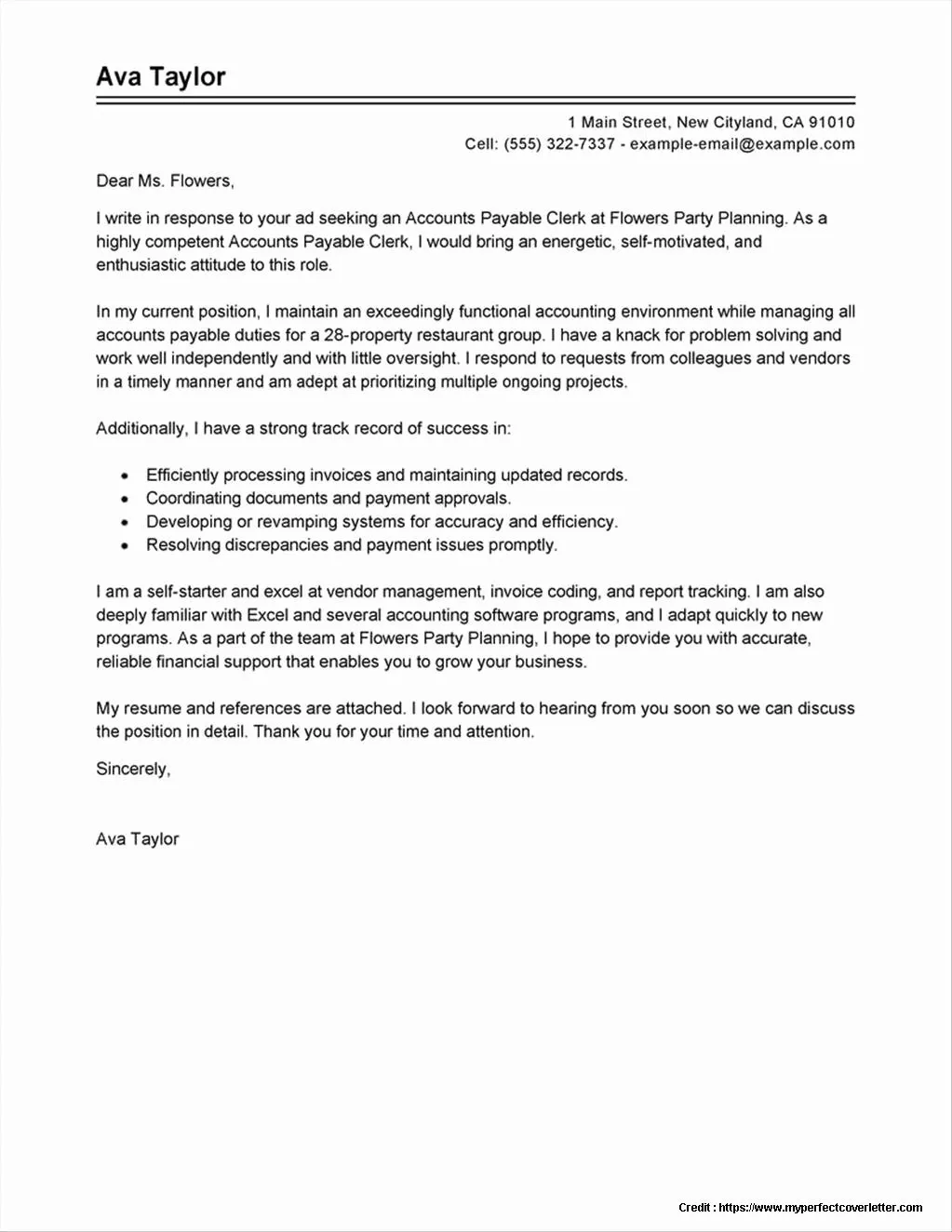
Comprehensive research is critical to creating a compelling cover letter. Before writing, take time to learn about the company’s mission, values, culture, and recent activities. Understand the company’s current challenges and how your skills can help address them. Read their press releases, browse their social media feeds, and check out reviews from employees. This research allows you to customize your cover letter. This shows you’re genuinely interested in joining the company. By referencing specific company initiatives, projects, or values, you demonstrate a deeper understanding of the organization. If you know, the company is expanding into a new market, then highlight related experience. If the company emphasizes innovation, showcase your forward-thinking approach. This research will make your cover letter not just a document, but a personalized pitch.
Expressing Enthusiasm and Fit
Your cover letter should express your enthusiasm for the role and the company. State your genuine interest in the position and explain why you’re excited about the opportunity. This can be demonstrated by describing why you want to work for the company and how your values align with theirs. For example, if the company values teamwork, provide examples of your collaborative experience. Highlight what excites you about the role, specific responsibilities, or the company’s impact on its industry. Enthusiasm is contagious and can leave a lasting impression. If you demonstrate your passion, the hiring manager will see you as more than just a candidate. They will see you as someone eager to join and contribute to their team and company goals.
Closing the Cover Letter
The closing of your cover letter is your final opportunity to leave a positive impression and encourage the hiring manager to contact you. Keep it concise and professional. Reiterate your interest in the position and thank the hiring manager for their time and consideration. Clearly state your availability for an interview. Provide your contact information again, just in case it is missed earlier. Proofread your closing paragraph carefully to ensure it is free of errors. A strong closing statement solidifies your professionalism and makes it easier for the hiring manager to take the next step. It should be a clear call to action that leaves the reader with a positive impression.
Formal Closing and Call to Action
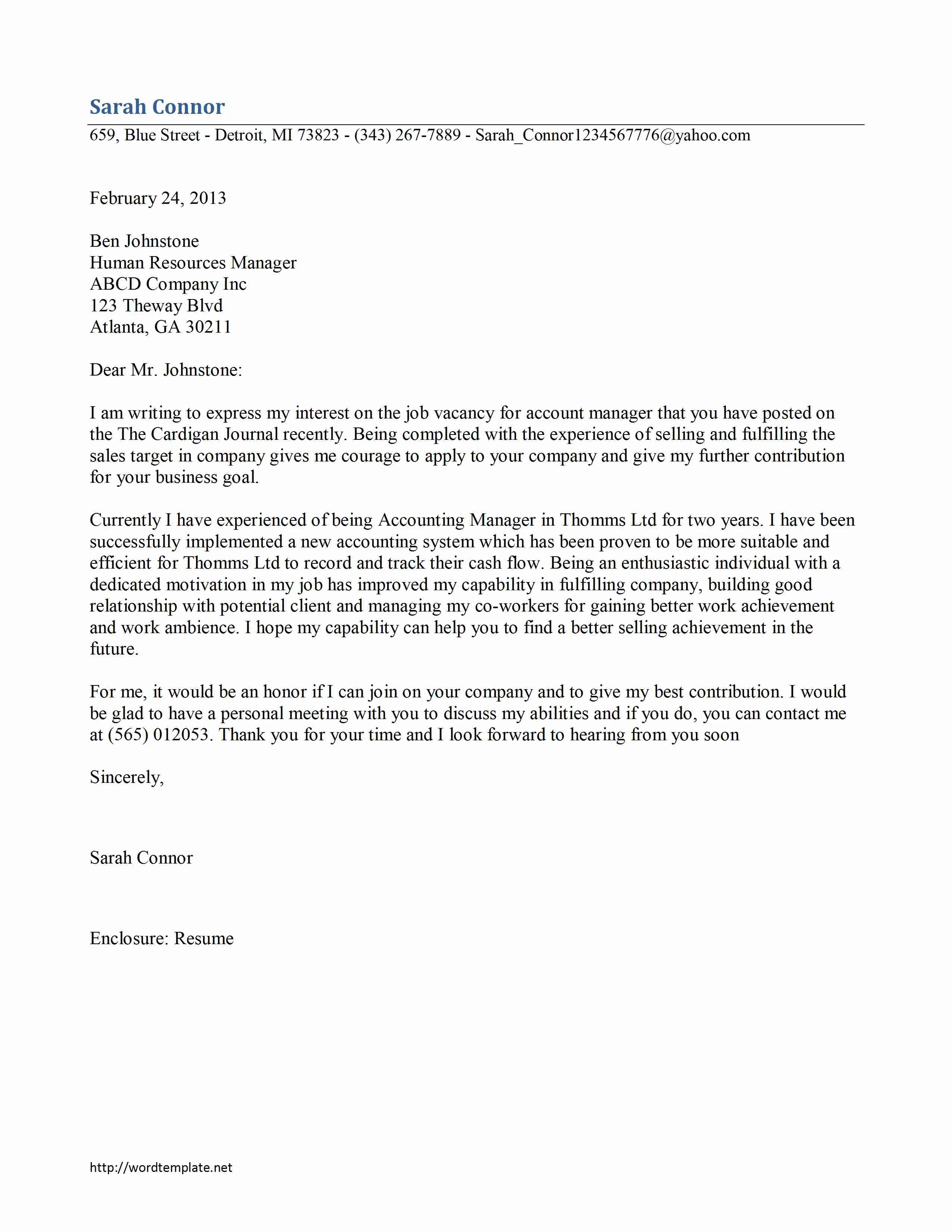
End your cover letter with a formal closing, such as “Sincerely,” “Best regards,” or “Thank you for your consideration.” Following the closing, include your full name. After the closing, include a call to action. You may invite the hiring manager to contact you for an interview. Reiterate your interest in the position and express your enthusiasm. Provide clear contact information. This way, it’s easy for the hiring manager to get in touch with you. Also, by requesting a call, you’re taking the initiative and showing that you are serious about the job. A clear call to action guides the reader. It moves them toward the next step in the hiring process.
Expressing Gratitude and Next Steps
Always express your gratitude to the hiring manager for their time and consideration. This shows respect and professionalism. A simple “Thank you for reviewing my application” can be effective. Also, include a statement about your next steps. You may state you are available for an interview. This makes it easy for the hiring manager to move forward. Reiterate your contact information, including your phone number and email. Make it easy for them to reach out to you. The goal is to end on a positive note. Ensure that your cover letter is polished, professional, and error-free. This final touch reinforces your suitability for the position.
